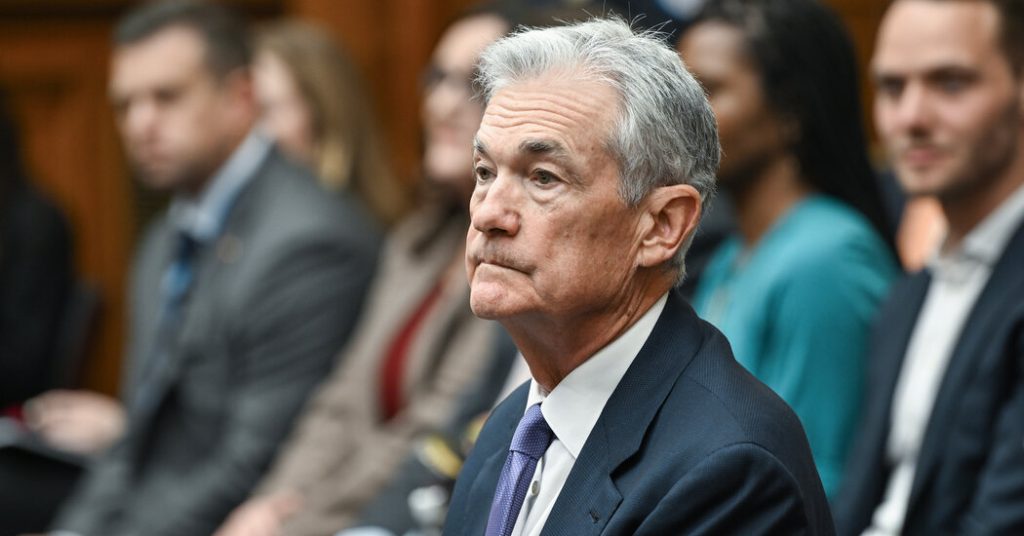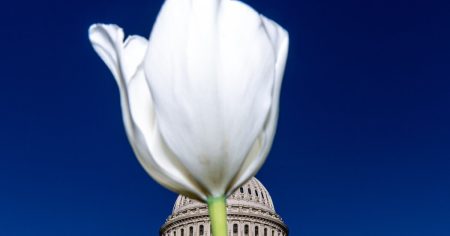The Federal Reserve is likely to delay cutting interest rates as a result of stubborn inflation readings in recent months, according to statements from the central bank’s top officials, Jerome H. Powell and Philip N. Jefferson. Despite expectations for inflation to cool rapidly, progress has stalled or even reversed by some measures. The Fed had previously indicated plans to cut rates three times by the end of 2024, but recent data on inflation have prompted officials to consider delaying these cuts. While Powell and Jefferson did not explicitly back away from this forecast, they also did not reaffirm it, leading to uncertainty among investors.
Investors have been closely monitoring Fed officials for any indications of when rate cuts might begin. Initial expectations for rate cuts to start this spring have been pushed back, with many now believing a rate cut may not occur until July or even later. Although annual inflation has fallen to about 3.5 percent in March, other economic indicators such as job growth, low unemployment, and resilient consumer spending remain strong. This has given policymakers confidence that maintaining higher interest rates will not jeopardize economic growth or lead to a recession, with the option to cut rates if necessary should the labor market weaken unexpectedly.
Mr. Powell and Mr. Jefferson both expressed confidence in the strength of the labor market and progress made in reducing inflation so far, suggesting that restrictive policy should be given additional time to show its effects. While there are signs that inflation may continue to decline and the labor market is rebalancing, the outlook remains uncertain. If incoming data indicates that inflation is more persistent than expected, the Fed may decide to maintain the current restrictive stance of policy for longer. The central bank continues to monitor economic indicators and adjust policy accordingly based on the evolving outlook.
The divergence in economic signals, with stubborn inflation paired with strong job growth and consumer spending, has created a challenging environment for the Fed to navigate. The uncertainty surrounding the outlook for inflation and the labor market necessitates a cautious approach to monetary policy. Powell and Jefferson emphasized the importance of allowing data and the evolving economic situation to guide future policy decisions, highlighting the flexibility the Fed has to respond to changing conditions. The central bank remains focused on supporting economic growth while keeping inflation in check, balancing the need for continued progress in reducing inflation with the potential risks of acting prematurely.
Given the complexity of the current economic environment and the potential impact of inflation on monetary policy decisions, the Fed faces a delicate balancing act in determining the appropriate timing for rate cuts. While there is confidence in the strength of the labor market and progress made in lowering inflation, uncertainties remain about the future trajectory of inflation and how these trends may affect the broader economy. The central bank’s commitment to data-driven decision-making and flexibility in responding to changing conditions will be crucial in navigating the challenges ahead and supporting sustainable economic growth in the long run. asdf.
Overall, the Federal Reserve’s decision on when to begin cutting interest rates will depend on a variety of factors, including the trajectory of inflation, the strength of the labor market, and consumer spending. While the central bank remains vigilant in monitoring economic indicators and adjusting policy accordingly, the recent pause in progress on inflation has led officials to reconsider the timing of rate cuts. The Fed continues to emphasize the importance of a cautious and data-driven approach to monetary policy, aiming to strike the right balance between supporting economic growth and maintaining price stability. As the economic outlook evolves, Fed officials will continue to assess the situation and make informed decisions to ensure the stability and resilience of the U.S. economy in the years ahead.















